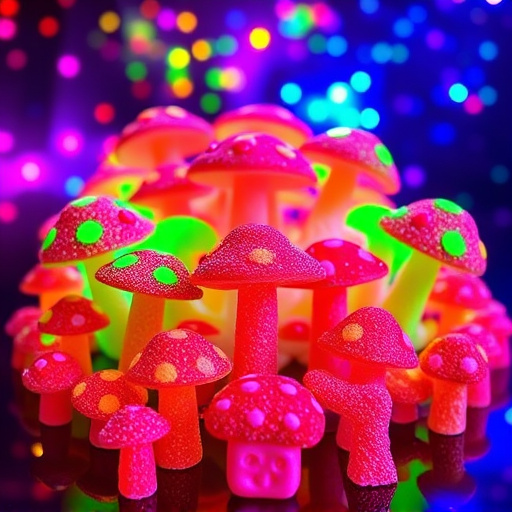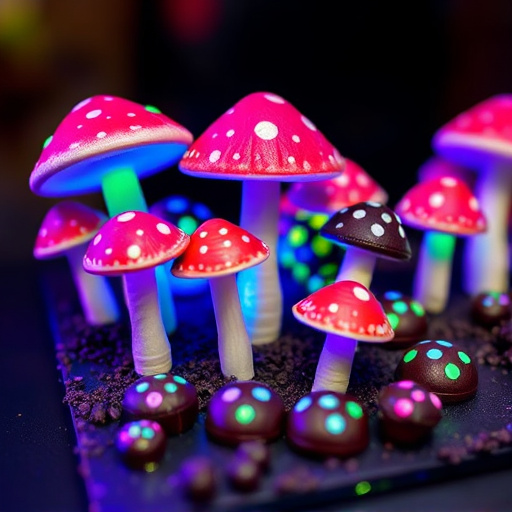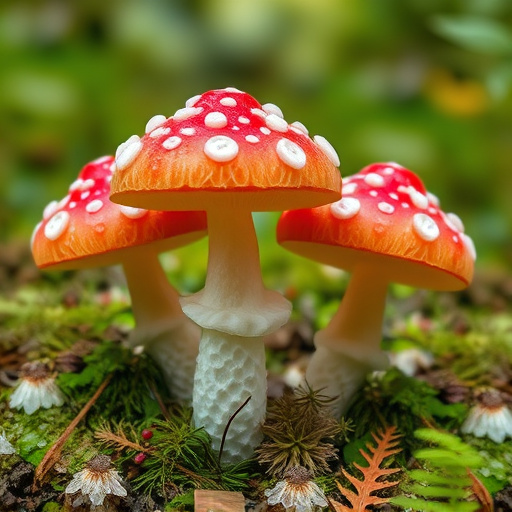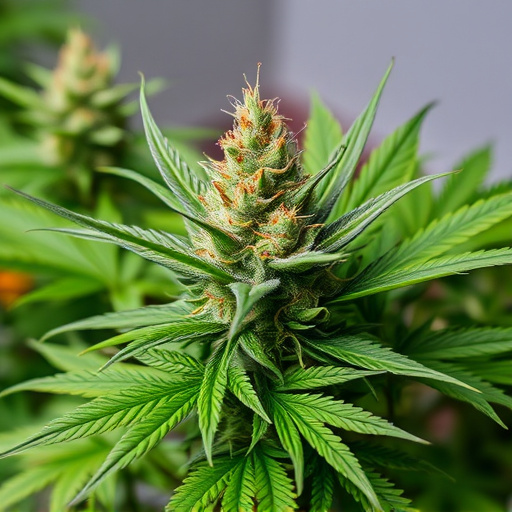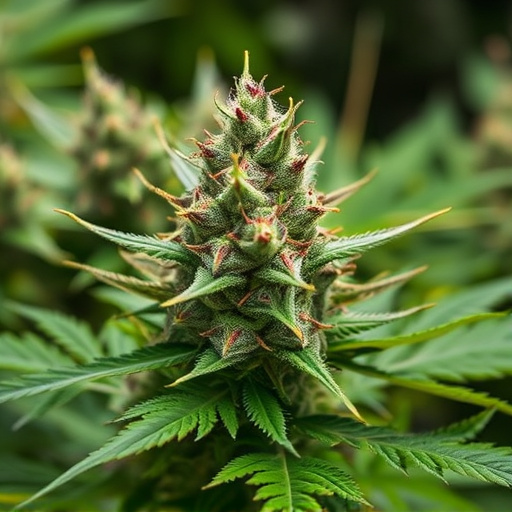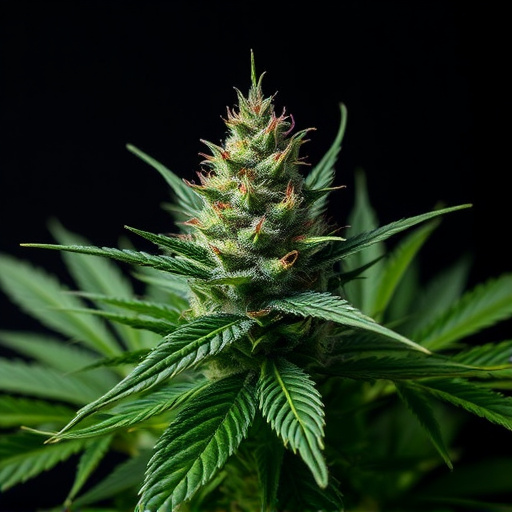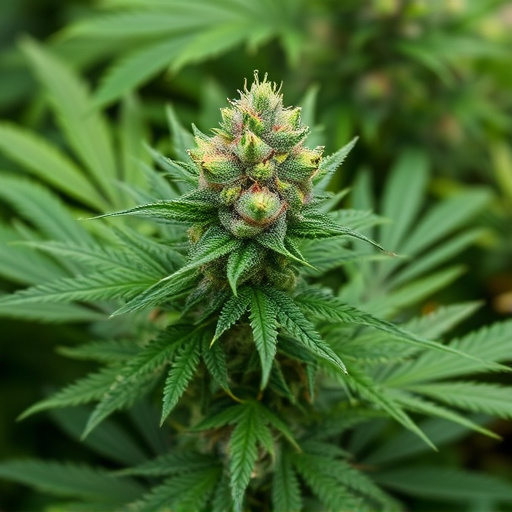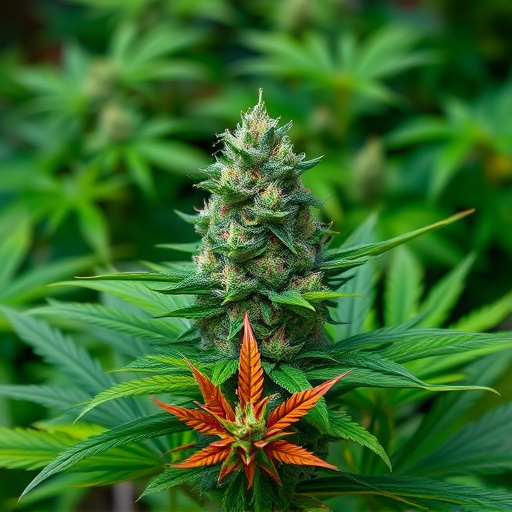High-THC cannabis strains, characterized by elevated tetrahydrocannabinol (THC) levels, offer intense experiences through their interaction with the endocannabinoid system. THC binds to CB1 and CB2 receptors, affecting mood, memory, appetite, pain, and sensory perception. The diverse effects of different types of cannabis strains result from unique THC-to-CBD ratios and terpene profiles, allowing users to tailor experiences based on personal preferences and needs.
“Unraveling the complexities of High-THC Strains: A Comprehensive Guide. Cannabis, known for its diverse spectrum, offers various types of strains, each characterized by its THC (tetrahydrocannabinol) content. From low to high concentrations, these strains significantly impact both mind and body. This article delves into the science behind THC’s interaction with our endocannabinoid system, explores the psychological and physical effects across different THC levels, and provides insights on navigating high-THC strains responsibly, including tips for beginners and safe dosage practices.”
- Understanding High-THC Strains: A Deep Dive into Their Composition
- – Definition of THC and its role in cannabis
- – How THC interacts with the endocannabinoid system
Understanding High-THC Strains: A Deep Dive into Their Composition
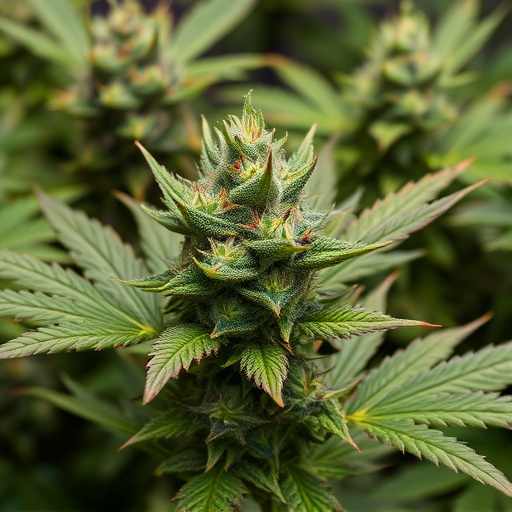
Cannabis enthusiasts and medical professionals alike often talk about different types of cannabis strains, each with unique characteristics and effects. High-THC strains are a specific category known for their elevated tetrahydrocannabinol (THC) content—a psychoactive compound responsible for the plant’s intoxicating effects. This composition sets them apart from other strains, offering a more intense experience.
A deep dive into high-THC strains reveals a complex interplay of various cannabinoids and terpenes. Cannabinoids are chemical compounds that interact with the body’s endocannabinoid system, influencing mood, memory, appetite, and pain perception. Terpenes, on the other hand, contribute to the strain’s aroma and flavor, as well as potential therapeutic effects. The specific combination of these elements determines the strain’s potency and the way it interacts with users’ bodies and minds.
– Definition of THC and its role in cannabis

Tetrahydrocannabinol (THC) is a potent chemical compound found in cannabis plants, responsible for the majority of its psychoactive effects. It interacts with the endocannabinoid system, a complex network within our bodies that regulates various functions including mood, memory, and pain perception. This interaction explains why consuming THC can alter one’s mental state and produce a range of physical sensations.
In different types of cannabis strains, THC levels can vary significantly, offering users diverse experiences. High-THC strains, typically containing over 20% THC, are known for their intense effects, potentially leading to increased relaxation, heightened sensory perception, and even creative inspiration. However, due to their potency, these strains may also induce anxiety or paranoia in some individuals.
– How THC interacts with the endocannabinoid system
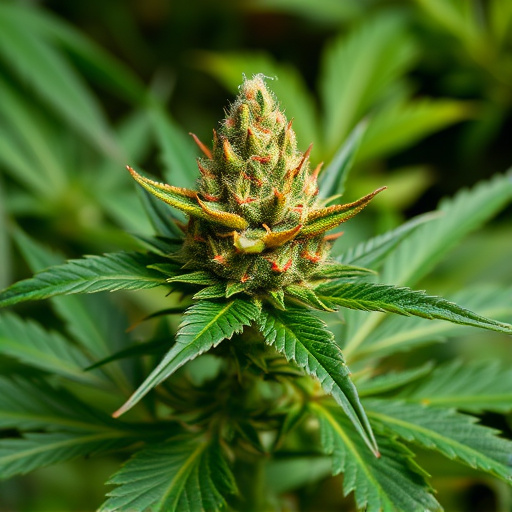
The primary active compound in cannabis, tetrahydrocannabinol (THC), has a profound impact on the body and mind by interacting with the endocannabinoid system (ECS). The ECS is a complex network of receptors located throughout the brain and body that play a key role in maintaining homeostasis—the internal balance necessary for optimal health. THC mimics the action of endogenous cannabinoids, binding to two primary receptors: CB1 and CB2.
Activating CB1 receptors in the brain and central nervous system is primarily responsible for THC’s psychoactive effects, inducing feelings of euphoria and altered perception. Meanwhile, CB2 receptors are more abundant in the immune system and peripheral tissues, where THC can influence pain sensation, appetite, and inflammation. The variety of effects experienced from different types of cannabis strains is largely determined by their unique THC-to-CBD ratios, as well as the specific terpene profiles that often accompany these cannabinoids.
High-THC strains, with their potent concentrations of tetrahydrocannabinol (THC), offer a unique experience for users. Understanding how THC interacts with our endocannabinoid system is key to appreciating the diverse effects on both mind and body. Whether seeking relief or an enhanced sensory experience, exploring different types of cannabis strains allows individuals to navigate the spectrum of potential benefits while remaining mindful of personal tolerances and preferences.
